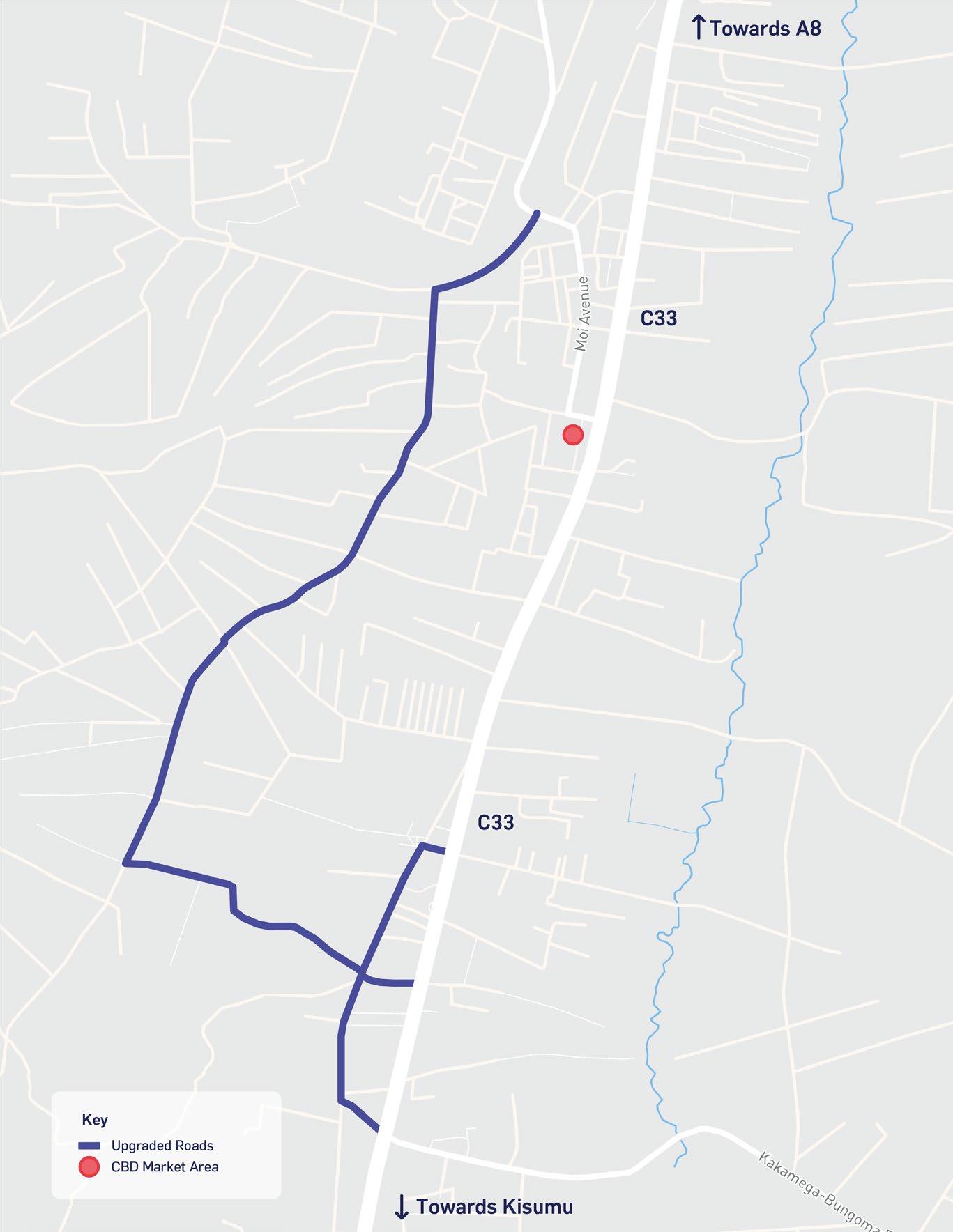
2 minute read
Figure 4-34 – Example of condominial sewerage systems
4.4.4 Project 14: Supporting the sewer network expansion
Project Overview
Although Bungoma Municipality has a sewer reticulation system which covers around 80% of the historic CBD, there are only around 2,400 sewer connections which equates to around only 15% of households within the Municipality. The effluent for the sewer network moves southwest to the Bungoma sewage treatment works (STW). The STW has a treatment capacity of around 4,500 m3/day, however, less than half of this is utilised due to the low number of household connections to the sewer network. Many homes are rented or do not have title deeds to the land and therefore their tenants are under the threat of eviction. These circumstances mean that households are reluctant to invest in the infrastructure needed to connect to the sewer system and a large proportion of households, businesses and institutions use pit latrines and septic tanks.
There are currently a number of projects proposed in Bungoma Municipality, these include the proposal for a new sewer line running along the western edge of the Town to increase the coverage of the sewer network, and a new STW along the River Sio to handle the increased volume from the new customers. In addition to this there is a proposal to increase the capacity of the current Bungoma STW in order to handle greater effluent quantities. Finally, there is a proposed project to build a new sewer network in Kibabii, due north of Bungoma Town, and expand the STW found at Kibabii University in order to improve the access to improved sanitation among households in Kibabii. Currently these projects are seeking the appropriate funding in order to get underway. In order to support this expansion of the sewer services within Bungoma Municipality, whilst helping to utilise the current capacity of the sewer network and STW, this project proposes to support low-income households connecting to the sewer network through the implementation of a rolling loan support programme or a lower sewerage tariff and subsidy for toilet constructions. The loan programme would provide financial aid to households who are close enough to connect to the sewer network but would otherwise be reluctant to connect to the network due to costs associated with connecting to the mains sewer.
Furthermore, the implementation of condominial sewerage systems should be explored for the future expansion of the sewage network in Bungoma. Unlike conventional sewer systems, where sewer services are provided to individual housing units, condominial sewerage systems provide sewage services to each housing block or group of households which form a neighbourhood. Using such systems can reduce the length of the main pipe required and can lead to reduced connection costs among households due to lower capital requirements for the implementation of infrastructure. There is a greater need for stakeholder engagement when designing and implementing condominial sewerage systems, which can result in better relationships between key stakeholders and the sewer network implementation agent.
Figure 4-34 – Example of condominial sewerage systems
Source: Water and Sanitation Program, The experience of condominial water and sewerage systems in Brazil (2005).
In water-scarce areas, or where people cannot afford the sewerage tariff, the water company should look to improve on-site sanitation, through advice and training on the construction on safe, improved pit latrines and septic tanks, and expand sludge emptying services to ensure that vehicles used can access small streets.










